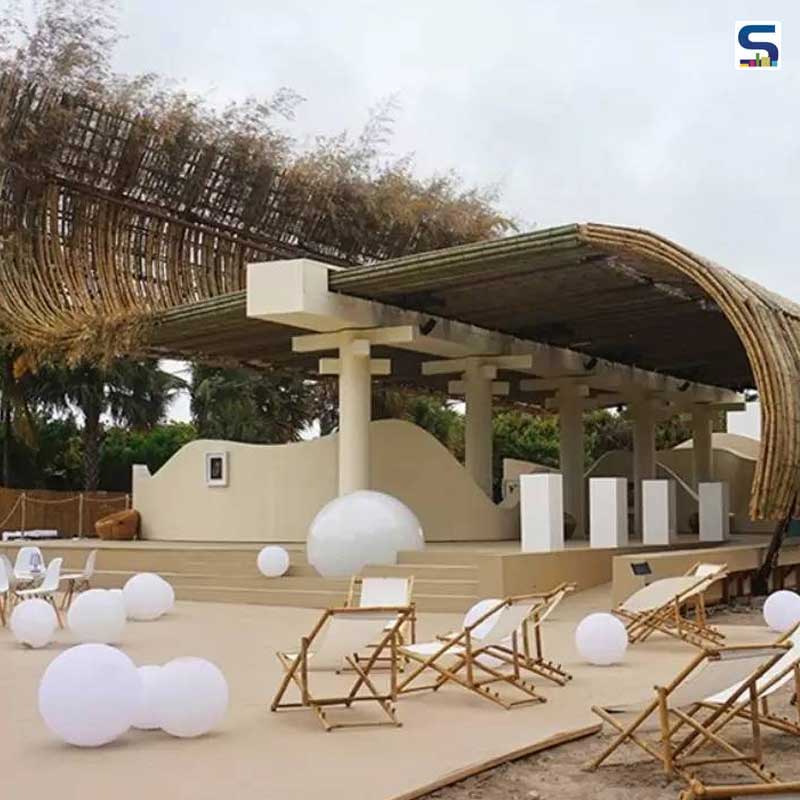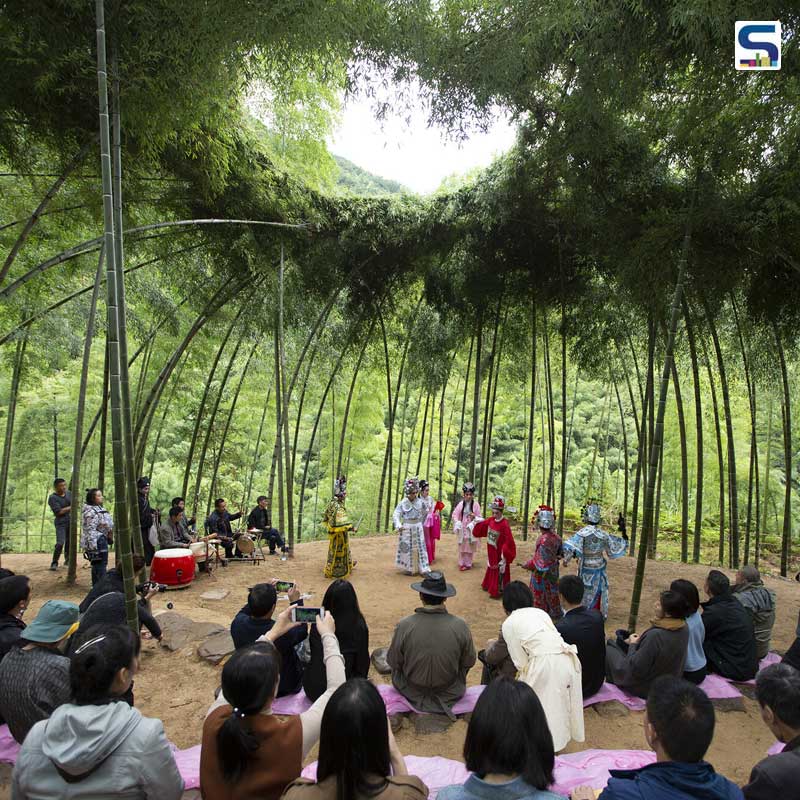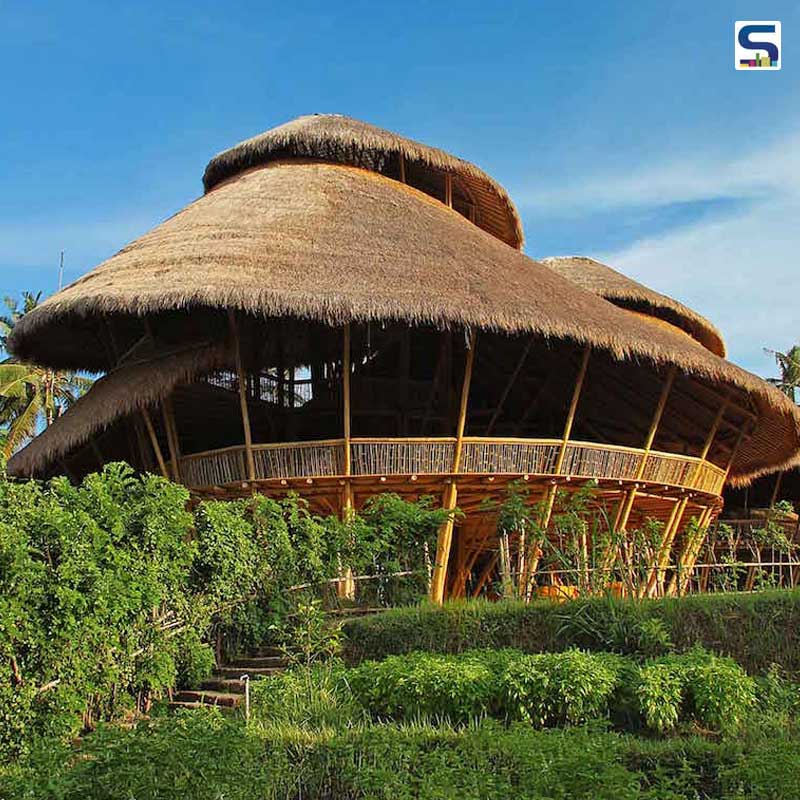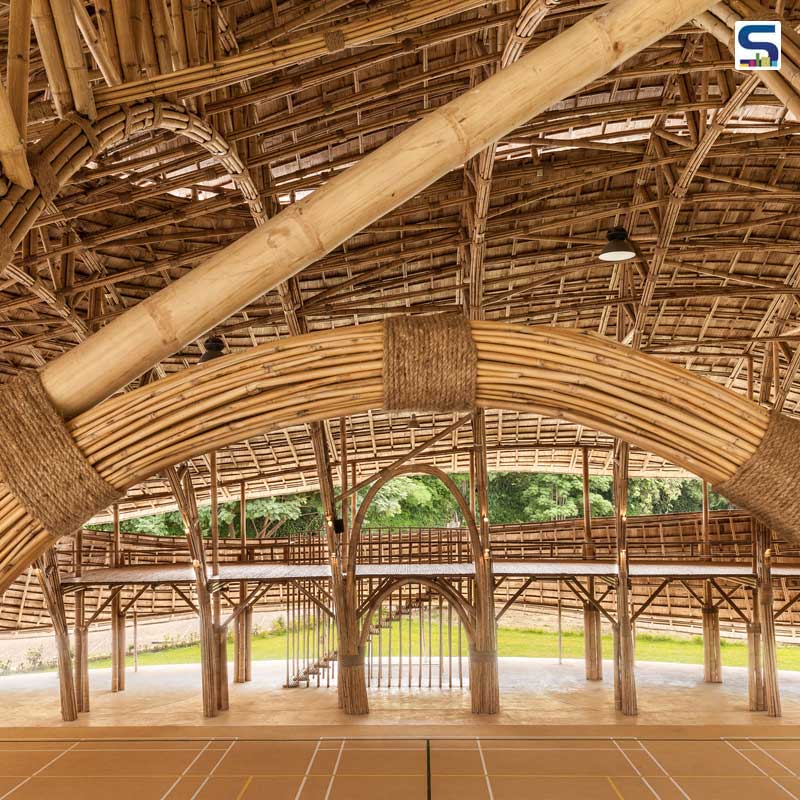
One of the abundant natural resources available in the tropical and sub-tropical regions of the world, bamboo is an oldest, well-established building material. On account of its natural characteristics and functionality, bamboo was once a primary building material. Often called as poor man’s timber, today bamboo is one of the finest building materials which is aesthetically pleasing and sustainably strong. Bamboo architecture has gone on to enjoy praises in times of global warming due to it sustainable factor wrapped around contemporary designs and modern engineering.

UPGRADING BAMBOO
Bamboo can be easily cultivated and harvested relatively in short time. It can be reused and bamboo structures are easy to bend and lithe – features that organic-shaped architecture demands. One such strong example of organic-shaped architecture is a theatre in Hengkeng Village which has been designed by Xu Tiantian by simply bending and weaving bamboo into a dome-shaped canopy with a circular opening at the top and a simple circle of stone benches. Historically speaking, this low-tech bio-organic approach has been inspired by a scroll which was created by the 16th century painter Qui Ying.
Fast forwarding a few centuries ahead, bamboo groves were cultivated by many local Asian communities that acted as scenic backdrops for leisure and cultural activities. As for today, bamboo is used as a building material. Round, segmented, jointed and hollow, bamboo rods have strong fibre. The strength of bamboo is two times higher than concrete, while its tensile strength is close to steel. Its fibre has sheer stress that is higher than wood with a much wider span. Bamboo can also be curved without breaking. The only drawback of bamboo is that it is vulnerable to termites and fungal attack, for which it goes through preservation process including borax boric acid solution injection.

BAMBOO AND ORGANIC ARCHITECTURE
Organic architecture correlates the relation between a building and its environment, stating that a building should integrate itself with its site. Other than being used in organic architecture, bamboo is majorly used during the construction of buildings. It is used to build the framework of the structure. With technological advancement and the rise in study of bamboo in terms of its properties, bamboo is no longer a substitute for wood; rather its one of the leading and most demanded building materials.
Built using bamboo as the main structure material, Green School in Bali, Indonesia, is touted to have revived bamboo in the country. Despite bamboo being available in abundance, the idea of using bamboo was considered cheap. However, the structural charm of the school brought change in that thought. Similarly, OBI Great Hall designed by Andry Widyowijatnoko is another example of bamboo structures. The wide span building structure is entirely made of bamboo with a rooftop that creates stunning skylight.

DISTINCT METHODS TO BEND BAMBOO
Organic architecture generally uses arch, spline or other curvature shape, for which bamboo needs to be curved. Ideally there are two methods to bend bamboo, namely hot bending and cold bending methods. Hot bending method involves immersion of bamboo in lukewarm water until the fibers turn soft enough to be curved using clamp or by heating bamboo section that makes bamboo fibers soft and easy to bend. For cold bending method, bamboo is split into plans and tied to form a bundle or bamboo rods are slashed till they form a curve.
Green School structure is made using the bamboo split technique, which is easy to construct and flexible. Although it can be used to create smooth curves even spline shapes, this method deteriorates the strength of bamboo and can cause structural deformation and deflection. That said, depending on the species and soil conditions, bamboo can naturally grow in curve shape. The naturally curved bamboo can be joined to create a bigger and wider arch.
Potentially vast and useful, the use of bamboo as a building material has evolved considerably over the years. Reliable and durable, bamboo in organic architecture has a long way to go, surpassing steel and concrete structures.